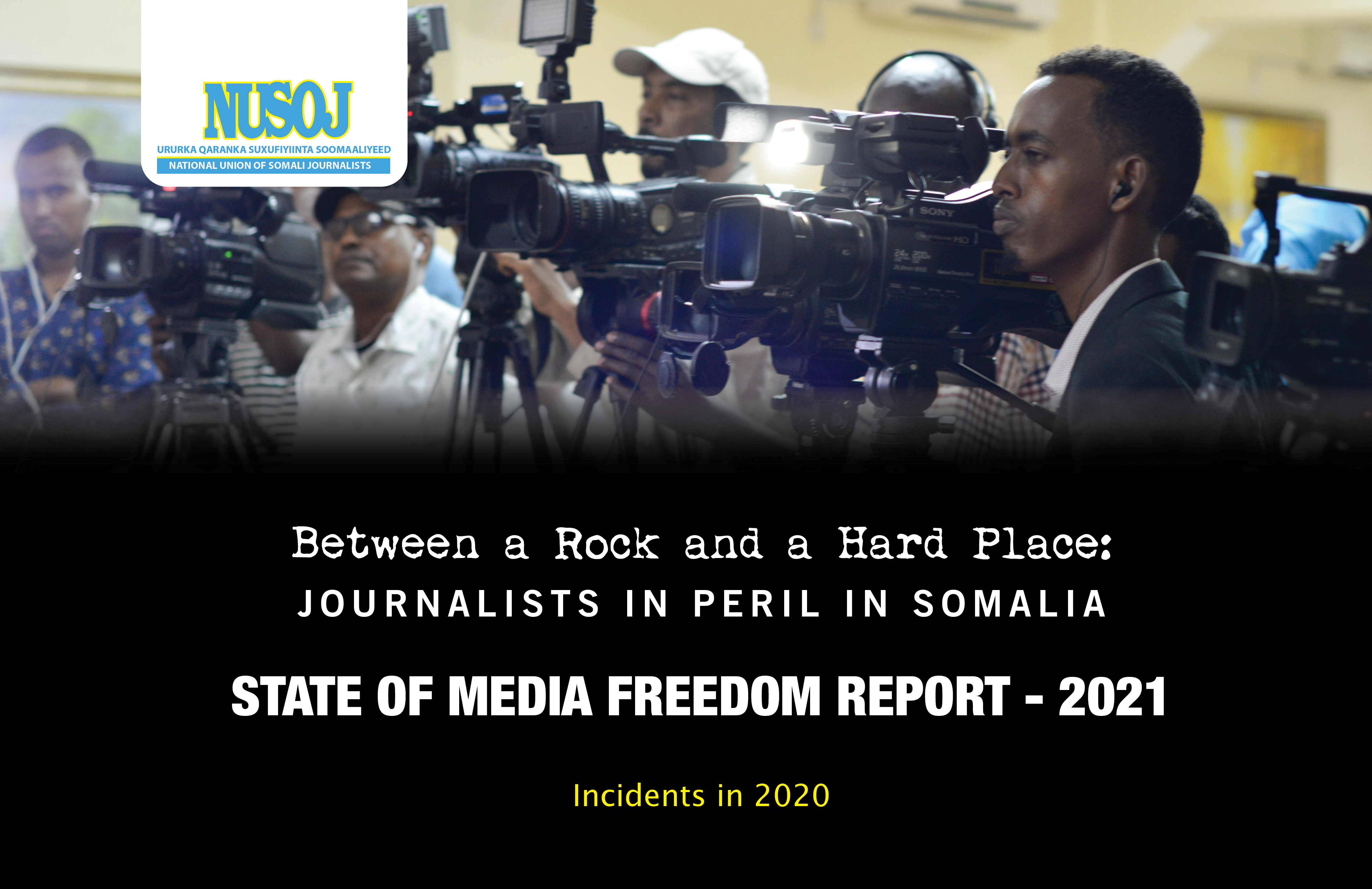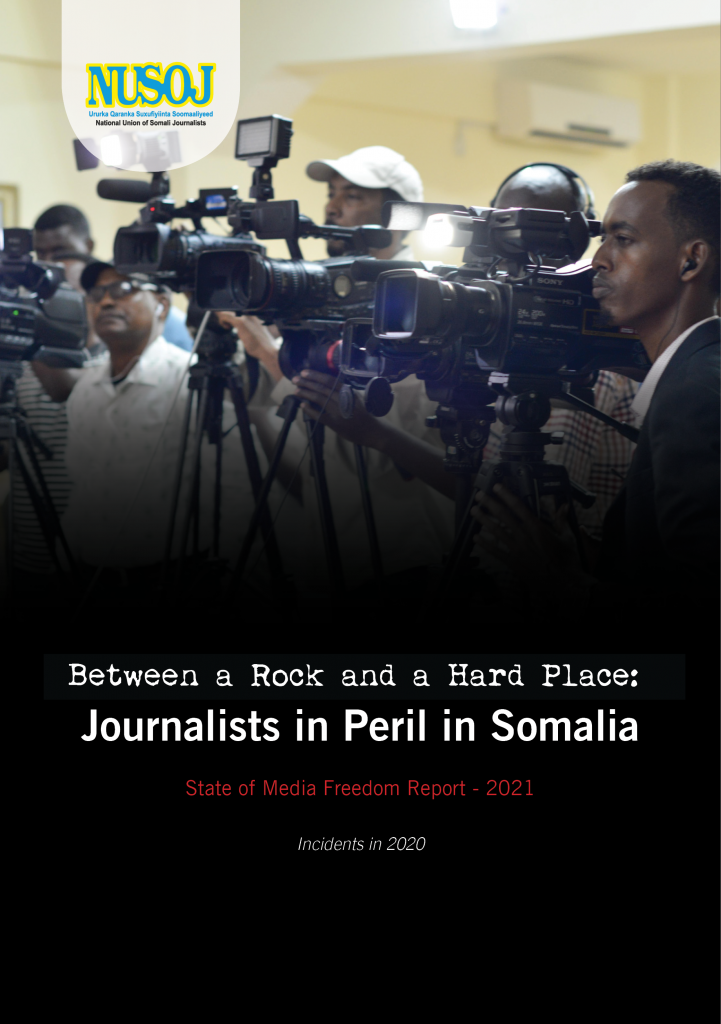Two journalists were killed and another 33 were detained while 133 cases of intimidation were logged in Somalia during 2020, the National Union of Somali Journalists (NUSOJ) reports in its State of Media Freedom Report 2021.
Released on World Press Freedom Day 2021, the report titled Between a Rock and a Hard Place, catalogues an atmosphere of media under siege, with the threat of death, arrest or intimidation by authorities, a daily reality for journalists in Somalia.
Journalists face threats from both non-state actors, as demonstrated by the targeted killings of Abdulwali Ali Hassan (Universal TV and Radio Kulmiye) on 16 February 2020 and Yusuf Ali (Kalsan TV) on 4 May 2020. The two journalists were killed in separate incidents following death threats that were issued to them through phone calls.
“The continuing loss of life to murder, whose perpetrators remain at large, is testimony to the risks journalists continue to face as they try to fulfil their duty of society’s messengers. Not a single murder of a journalists killed in 2020 has been investigated, resolved and the culprit brought to book. The routine harassment and detention of dozens of others, also continue a familiar if disturbing trend in Somalia,” NUSOJ Secretary General Omar Faruk Osman, said in comments on the report.
The union underscored that journalists continue to face partial security officers, detention, biased courts and a repressive legal regime. The courts convicted journalists in 99 percent of the cases brought before them and displayed a lack of interest in exercising the judicial rigour expected of courts in a democratic and free society.
Broadcast journalism proved to be particularly risky with the two journalists killed during the year all working for television. Equally, 27 of the 33 journalists arrested during the year worked for either television or radio.
Somaliland led in arrest of journalists with 9 arrests, followed by Banadir region at 6, Jubbaland 5, Hishabelle 4 and Southwest 3. Galmudug registered one case.
In several court proceedings in the Federal Member States, NUSOJ has observed that contrary to the presumption of innocence until proven guilty, the courts of the regional administrations have flipped this, assuming guilt and requiring the accused to prove their innocence. The courts tend to be partial, often ignoring evidence that favour the accused. This denies poor journalists access to temporary liberties such as bail.
Statistics show that 99% of all the cases brought against journalists resulted in a conviction that largely mirrored the wishes of the political entity or person behind the charges, according to the report.
Journalists working in Puntland by far, received the largest number of threats and intimidation directed at them because of their journalism work. A total of 28 cases of intimidation and other assaults against journalists recorded were recorded in Puntland during 2020.
Somaliland followed closely with journalists reporting sustained intimidation, threats of violence. Security forces tended to act swiftly against journalists on the orders of politicians who were uncomfortable with their reporting.
While Banadir, Hirshabelle and Galmudug recorded lesser incidents of intimidation and other assaults against journalists, efforts to cow independent journalists into submission and silence are disturbing, states the report. Many journalists reported cases of threats directed at them by figures in authority.
The annual report says a staggering 98 percent of threats, attacks against journalists and violations of press freedom, were unresolved and there was no tangible effort to investigate and bring closure for the victims. This is emblematic of the unrestrained culture of impunity, lack of political will and the systematic weaknesses that prevail across of Somalia.
“While the killings create fear in the mind of journalists, another insidious threat comes in the form of routine harassment, intimidation and issuance of threats to journalists. A total of 113 incidents of intimidation were logged during the year,” Osman added.
NUSOJ added that the failure to apprehend and punish offenders, arbitrary arrests, the detention and the trial of journalists on trumped up charges in captive courts, also demonstrate that repression and the conditions that encourage impunity against journalists are very much alive in Somalia.
“We will not relent in its efforts to document, report and disseminate cases of abuse of journalists to authorities in Somalia, to the public and to international partners. We shall continue to put to shame those that disregard the rule of law and put journalists lives at risk. We demand for justice for our fallen colleagues and those journalists that everyday continue to bear the brunt of harassment” emphasised Osman.


